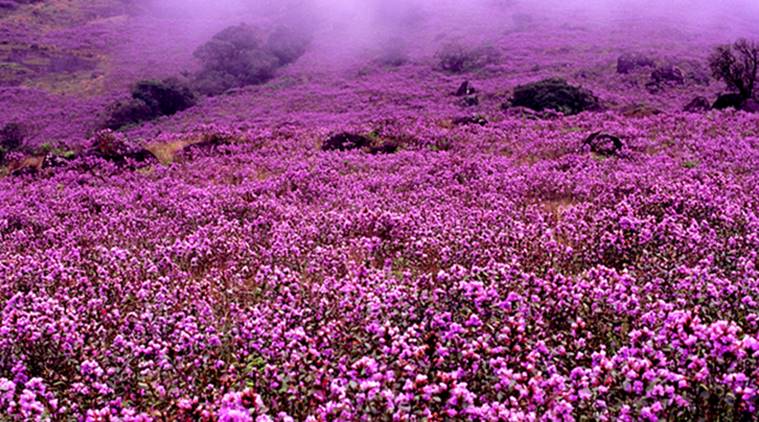After 12 years, Neelakurinji flowers will turn the lush hills of Kerala into a purple landscape
Neelakurinji plant is a tropical plant species which is generally found in Asia and Australia. It belongs to the genus Strobilanthes which has around 450 species of which 146 are found in India and of them, about 43, in Kerala.

The neelakurinji will bloom in the Anamalai hills near Munnar, Kerala. (Source: Kerala tourism/Balan Madhavan)
After a gap of around 12 years, Kerala will be resplendent, clad in a purplish-blue carpet. The neelakurinji will bloom in the Anamalai hills near Munnar, a phenomenon that occurs once in 12 years. In 2006, it created quite a buzz and there was a huge surge in the number of tourists visiting Munnar to revel in its beauty. Similarly, this year, thousands of visitors are expected to flock to the scenic hills in Kerala to behold the spectacle that will last until October. However, soon after monsoon hits the state, August is considered the best time to visit Kerala and experience this natural beauty.
Spread over 3,000 hectares of rolling hills, Munnar is home to this rarely occurring neelakurinji flower plants. Each shrub reproduces once in its lifetime and dies after flowering. These plants take another 12 years for the seeds to sprout again and grow up to 30 to 60 centimetres high.
Neelakurinji plant is a tropical plant species which is generally found in Asia and Australia. It belongs to the genus Strobilanthes which has around 450 species of which 146 are found in India and of them, about 43, in Kerala. The official Kerala tourism site is filled with pictures from each year of the bloom. The purple flower is a feast for butterflies, honeybees and other insects as it holds a large amount of nectar which especially attracts the Apis cerana honeybee.
For all the latest Lifestyle News, download Indian Express App
© IE Online Media Services Pvt Ltd






















No hay comentarios:
Publicar un comentario